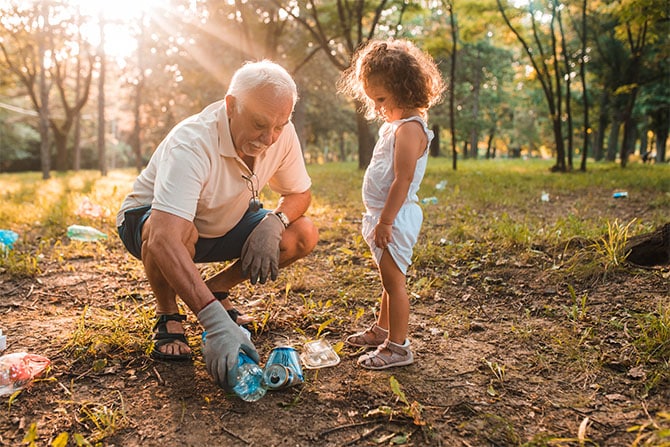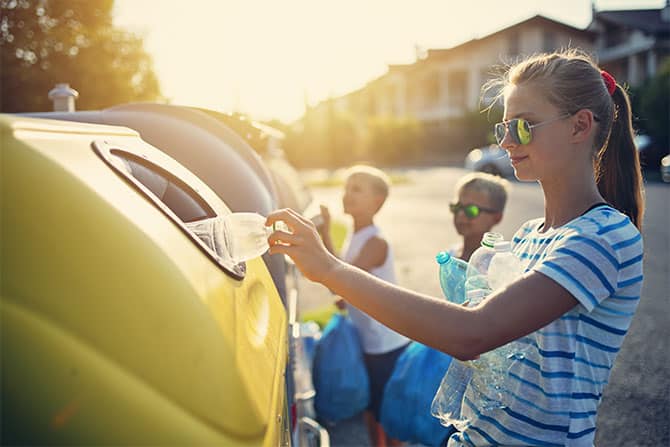Open the lid, throw the rubbish in, close the lid – it doesn’t matter what it says on top. Totally wrong! We need to be careful where we dispose of our waste if we want to help protect the environment. And when it comes to sorting properly, we Europeans have come quite far. We have increased the recycling rate, i.e. the proportion of plastic packaging recycled, by a total of 50 percent. This feels really good, but there’s still a lot of work to do, because now it’s time to stay with it and continue to educate.
There are still plenty of rumours circulating on the subject of waste separation – and why it supposedly makes no sense to sort bottles, paper, tins, packaging and plastic at home. Time to clear this up, because it is only with properly separated waste that we can help nature.

You can safely forget this myth. We have to pre-sort our waste – that’s the only way recycling can work and demonstrate what it can do. So if processed plastic for recycling – so-called plastic recyclate – is used in new products, this not only conserves raw materials, but also reduces energy consumption and CO2 emissions that are normally generated in the production of plastics from crude oil. Each tonne of recycled plastic saves between 1.5 and 3.2 tonnes of climate-relevant greenhouse gases compared to newly produced plastic.
Why not just burn my waste in my garden incinerator? Because this myth is just a myth. Yes, waste is indeed incinerated – but only the residual waste that you put in the black bin. Packaging from the yellow sack and the yellow bin, as well as glass, paper and cardboard, can be recycled to a large part, but only if you separate all of this properly from residual waste.
Our waste management companies take them to waste sorting plants, where residual waste and non-recyclable material is separated from recyclable material. Waste from the yellow sack or the yellow bin makes its way back into the recycling system, and later you may find those old CD cases back on your ears as new headphones.

A delicious supermarket salad followed by a fruity yoghurt for lunch – but where should you put the rubbish? The yoghurt lid is made of aluminium and the salad container is full of dressing. There’s no way this all belongs in the yellow bin. But it does. The yellow sack and yellow bin are also intended for packaging made of tin, aluminium and composite materials such as beverage cartons. You don’t have to rinse them out, since that happens in the further recycling process. What you should do, however, is to empty the packaging completely.
However, please be careful, as not all plastic is collected here. Toothbrushes, children’s toys and old cleaning buckets should be thrown into the residual waste bin or handed in at your municipal recycling centre.
When you stand in front of the container and wonder where which type of glass goes, it does actually matter where you dispose of it. White, green or brown glass – each bottle prefers to be with its corresponding friends. Why don’t you do them a favour, because that’s the only way they can be recycled. Brown glass in the container for white glass can discolour all the glass when it is melted down – an unattractive idea.
One more tip: anything that you cannot identify by colour, for example blue glass, belongs in the container for green glass. Proper separation pays off. Each glass bottle consists of 60 percent old glass, and in the case of green glass, the figure is as high as 90 percent.
Photo credits: iStock.com/Fotomaximum, iStock.com/RgStudio , iStock.com/Imgorthand